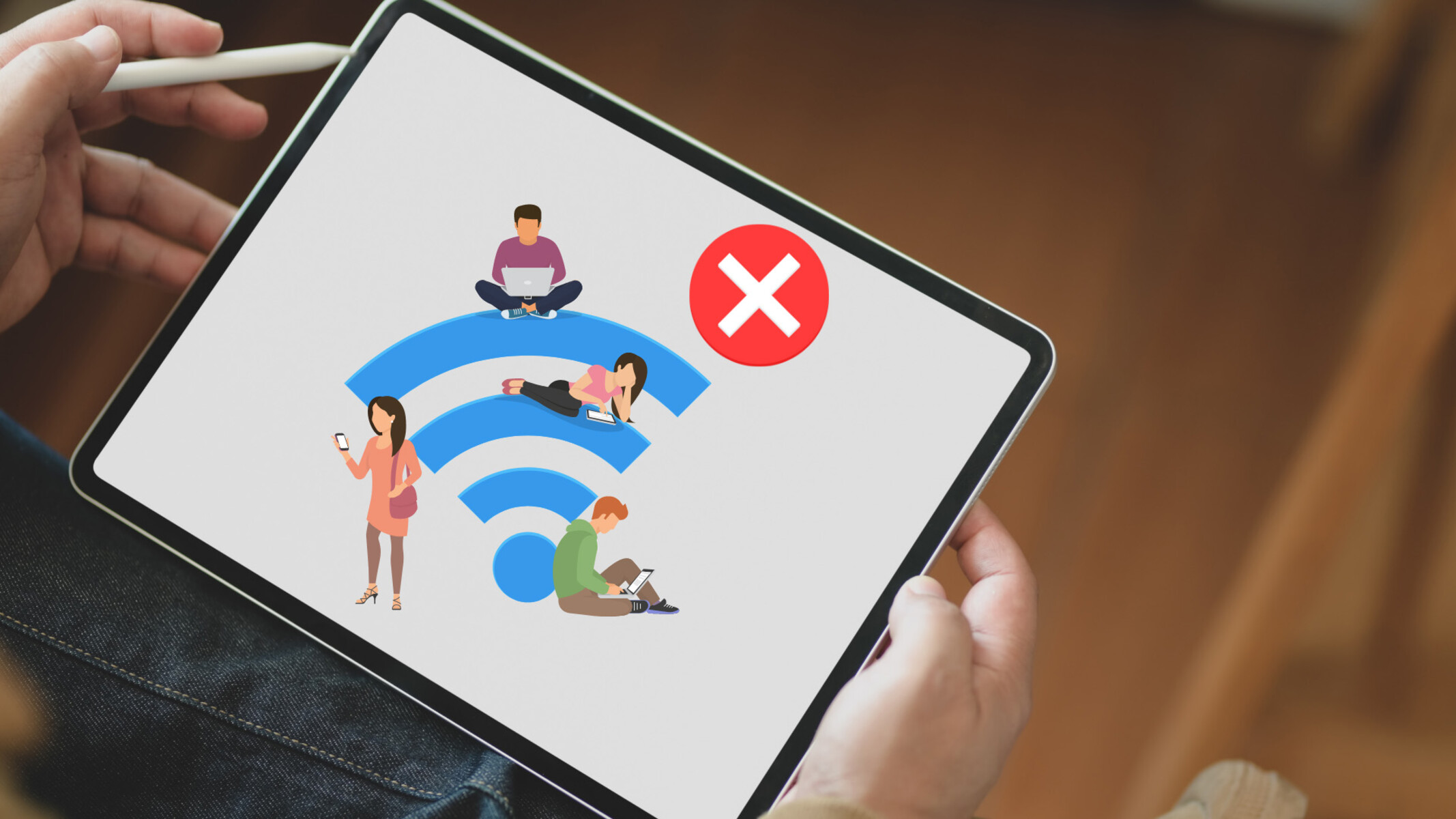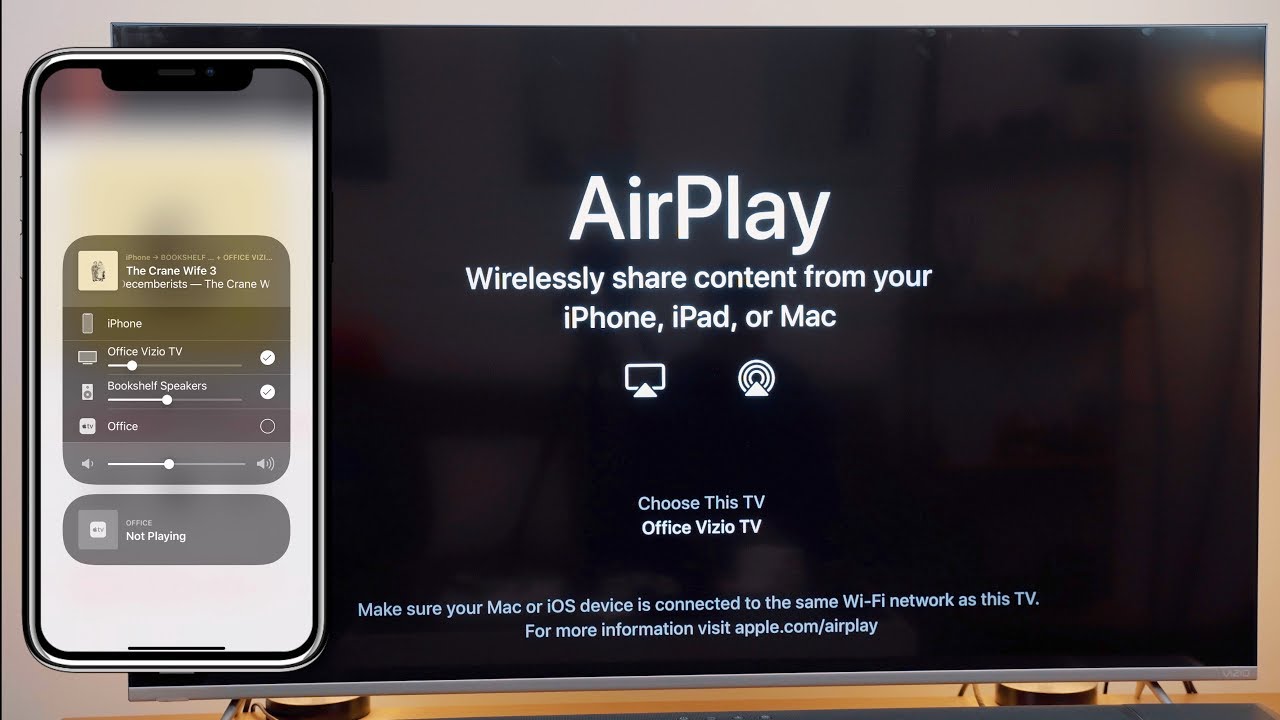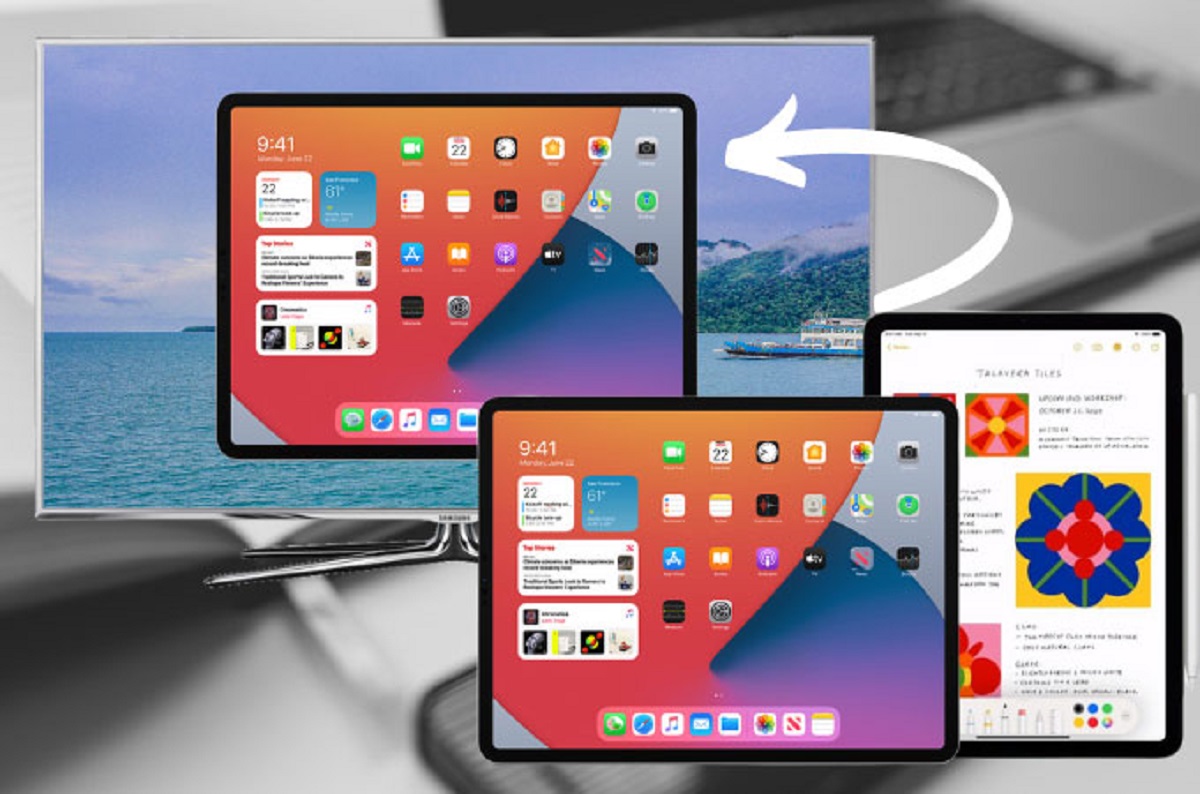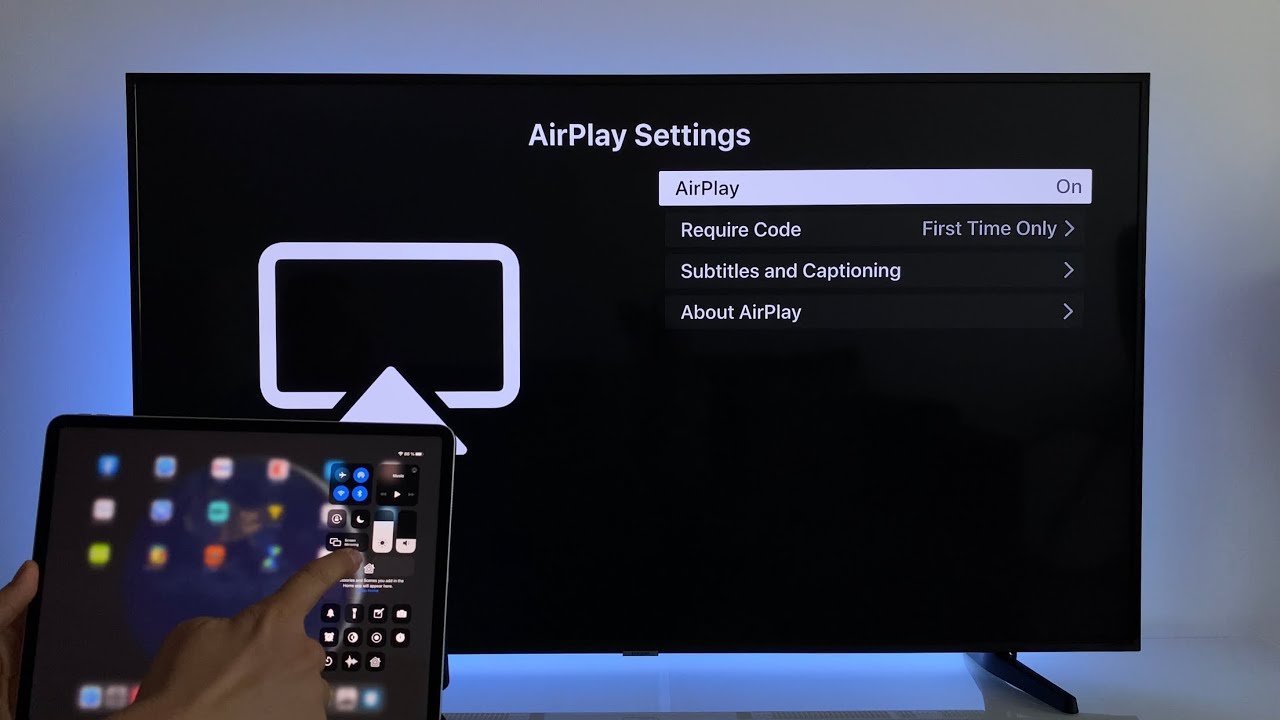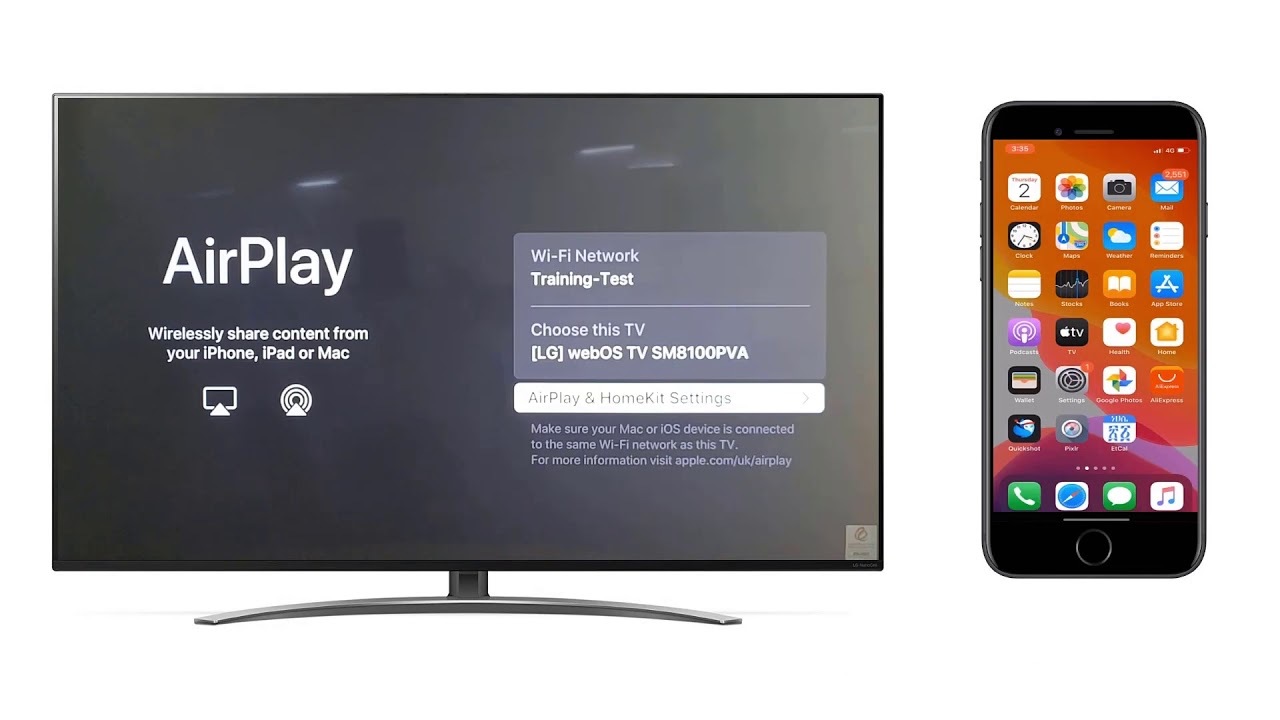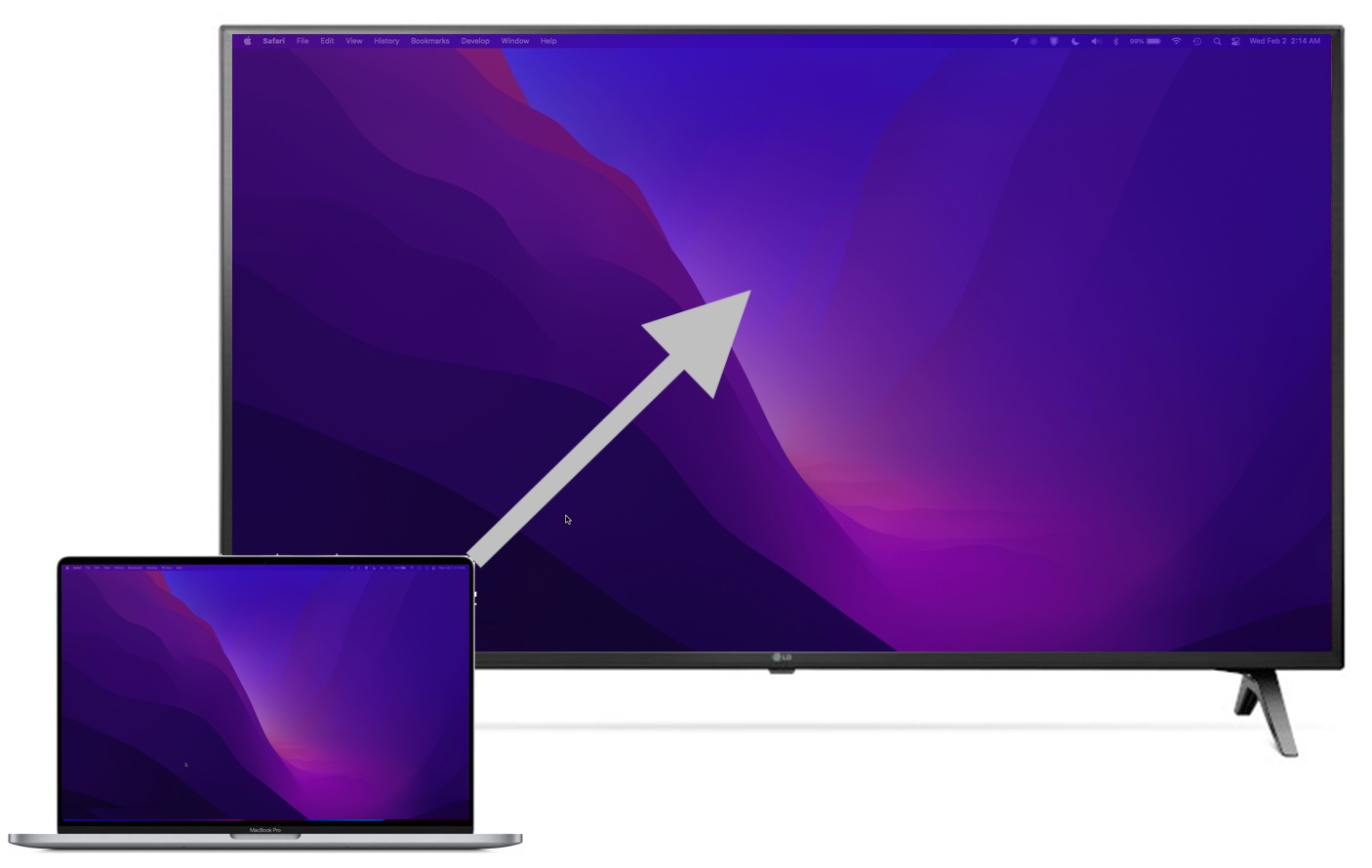Introduction
Connecting your iPad to a wireless router allows you to access the internet and enjoy online content while on the go. Whether you’re at home, at the office, or at a coffee shop, having a reliable and secure Wi-Fi connection is essential for browsing the web, streaming videos, and using various online apps. In this guide, we will walk you through the steps to connect your iPad to a wireless router effortlessly.
Before we dive into the technical details, it’s important to ensure that you have a compatible iPad model and a nearby wireless router with an active internet connection. Most modern iPads, including the iPad Air, iPad Pro, and iPad Mini, come with built-in Wi-Fi capabilities, allowing you to connect to any standard wireless network. Additionally, make sure you have the Wi-Fi network name (SSID) and password available, as you will need them during the setup process.
Connecting your iPad to a wireless router not only provides you with an internet connection but also enables seamless synchronization of your data and files across different devices. You can transfer photos, videos, and documents wirelessly between your iPad and other compatible devices, such as your computer or smartphone.
In this guide, we will cover several troubleshooting steps to help you establish a successful connection between your iPad and the wireless router. Whether you are experiencing connectivity issues or simply want to set up a new network, we have you covered. Let’s get started!
Step 1: Check Wi-Fi Settings on iPad
The first step in connecting your iPad to a wireless router is to check the Wi-Fi settings on your device. This ensures that your iPad is correctly configured to connect to a Wi-Fi network. Follow these simple steps:
- Open the Settings app on your iPad by tapping on the “Settings” icon on the home screen.
- In the Settings menu, tap on the “Wi-Fi” option. This will take you to the Wi-Fi settings page.
- Make sure the Wi-Fi toggle is turned on. If it’s off, tap on the toggle to enable Wi-Fi connectivity.
- Your iPad will begin scanning for available Wi-Fi networks. Wait for a moment until the list of networks appears.
- Select your desired Wi-Fi network from the list by tapping on its name (SSID).
- If the Wi-Fi network is password protected, you will be prompted to enter the network password. Type in the password accurately, taking note of uppercase and lowercase letters as passwords are case-sensitive.
- Once you’ve entered the password, tap on the “Join” button, and your iPad will attempt to connect to the Wi-Fi network.
- If the connection is successful, the Wi-Fi network’s name will appear at the top of the Wi-Fi settings page with a checkmark indicating the connection status.
Checking the Wi-Fi settings on your iPad ensures that you’re connected to the right network and that the password is entered correctly. If you encounter any issues during this step, double-check the network’s password and try reconnecting. If the problem persists, proceed to the next troubleshooting step.
Step 2: Restart iPad and Router
If you’re experiencing connectivity issues while trying to connect your iPad to a wireless router, restarting both your iPad and the router can help resolve the problem. Follow these steps to restart your devices:
- On your iPad, press and hold the power button until the “Slide to Power Off” slider appears.
- Swipe the slider to power off your iPad completely.
- Next, locate the power source of your wireless router and unplug it from the power outlet.
- Wait for about 10-15 seconds before plugging the router back in.
- Once the wireless router has restarted, press the power button on your iPad to turn it back on.
- After your iPad powers up, go to the Wi-Fi settings and reconnect to your desired network following the steps mentioned in the previous section.
Restarting both your iPad and the wireless router can help refresh the network connections and clear any temporary glitches that might be causing connectivity issues. By doing so, it allows your devices to establish a fresh connection with each other.
If restarting your devices doesn’t resolve the connectivity problem, proceed to the next troubleshooting step to further diagnose and resolve any underlying issues.
Step 3: Reset Network Settings on iPad
If you’re still unable to connect your iPad to a wireless router after restarting both devices, resetting the network settings on your iPad can often help resolve persistent connectivity issues. Follow these steps to reset network settings:
- Open the Settings app on your iPad and go to the “General” section.
- Scroll down and tap on the “Reset” option. A list of reset options will appear.
- Tap on “Reset Network Settings.” You may be prompted to enter your passcode or Apple ID password for authentication.
- Confirm your decision to reset network settings by tapping on the “Reset Network Settings” button.
- Your iPad will proceed to reset the network settings, which may take a few minutes.
- Once the process is complete, your iPad will restart. You’ll need to reconnect to your Wi-Fi network by following the steps mentioned earlier.
Resetting network settings clears any customized network configurations and restores the network settings to their default state. This includes Wi-Fi networks, passwords, and VPN settings. While this action may seem drastic, it can often resolve complex connectivity issues that cannot be resolved through simple troubleshooting steps.
Note that resetting network settings will not delete any of your personal files or data on your iPad. However, it will remove any saved Wi-Fi networks and passwords, so make sure you have them handy before proceeding with this step. If resetting your network settings doesn’t solve the problem, continue to the next troubleshooting step.
Step 4: Update iPad Software
Keeping your iPad’s software up to date is crucial for maintaining optimal performance and compatibility with various applications, including the ability to connect to a wireless router. Outdated software can sometimes cause connectivity issues. Here’s how you can check and update your iPad’s software:
- Open the Settings app on your iPad and navigate to the “General” section.
- Tap on “Software Update.” Your iPad will check for any available software updates.
- If an update is available, tap on the “Download and Install” button. Make sure your iPad is connected to a Wi-Fi network and has sufficient battery level or is plugged in during the update process.
- Follow the on-screen instructions to download and install the software update. Your iPad will restart once the update is complete.
- Once your iPad powers back up, go to the Wi-Fi settings and reconnect to your desired network by following the steps mentioned earlier.
Updating your iPad’s software ensures that it has the latest bug fixes, security patches, and improvements. These updates may also include enhancements to Wi-Fi connectivity and network stability, which can help resolve any issues preventing your iPad from connecting to a wireless router.
If your iPad’s software is already up to date or updating the software doesn’t resolve the connectivity problem, proceed to the next troubleshooting step for further assistance.
Step 5: Forget Wi-Fi Network and Reconnect
If you’re still unable to connect your iPad to a wireless router, forgetting the Wi-Fi network and then reconnecting to it can help resolve any persistent connection issues. Here’s how you can do it:
- Open the Settings app on your iPad and go to the “Wi-Fi” section.
- Locate the Wi-Fi network that you’re having trouble connecting to and tap on the blue “i” icon next to it.
- On the network details page, tap on the “Forget This Network” option. A confirmation pop-up will appear.
- Confirm your decision to forget the network by tapping on the “Forget” button.
- Once the network is forgotten, restart your iPad by holding down the power button and swiping to power off.
- After your iPad restarts, go back to the Wi-Fi settings and locate your desired network from the available list.
- Tap on the network name (SSID) to reconnect to it.
- If prompted, enter the Wi-Fi network password accurately to establish the connection.
Forgetting the Wi-Fi network removes any saved network settings and configurations associated with it. By reconnecting to the network from scratch, you ensure that your iPad establishes a fresh connection with the wireless router, potentially resolving any underlying connectivity issues.
If you’re still facing connectivity problems after forgetting and reconnecting to the Wi-Fi network, proceed to the next troubleshooting step for further assistance.
Step 6: Reset Router to Factory Settings
If you have exhausted all previous troubleshooting steps and still can’t connect your iPad to a wireless router, resetting the router to its factory settings may help resolve the issue. Resetting the router will erase all custom configurations and restore it to its default settings. Here’s how you can reset your router:
- Locate the reset button on your router. It is usually a small, recessed button that may require a paperclip or a pin to press.
- Press and hold the reset button for about 10 seconds or until the router’s lights blink, indicating that the reset process has started.
- Wait for the router to completely restart and reset to its factory settings. This process may take a few minutes.
- Once the router is reset, you will need to reconfigure it with your internet service provider’s settings. Consult your router’s manual or contact your internet service provider for assistance with the setup process.
- After the router is set up, go to the Wi-Fi settings on your iPad and reconnect to the router’s Wi-Fi network, following the steps mentioned earlier.
Resetting your router to factory settings can help eliminate any complex network configurations or settings that may be causing connectivity issues. This step effectively starts from a clean slate and allows your iPad to establish a fresh connection to the router.
If resetting the router doesn’t solve the problem, it may be necessary to contact your internet service provider for further assistance or consider seeking professional help to diagnose and resolve any underlying network issues.
Step 7: Contact Internet Service Provider
If you have followed all the previous troubleshooting steps and are still unable to connect your iPad to a wireless router, it may be time to contact your internet service provider (ISP) for assistance. The ISP can help diagnose and resolve any potential issues with your internet connection. Here’s what you can do:
- Find the customer support contact information for your ISP. This can usually be found on their website, on your billing statement, or in any documentation provided when you signed up for the internet service.
- Call the customer support number provided by your ISP and explain the connectivity issues you are experiencing with your iPad and wireless router.
- Describe the troubleshooting steps you have already taken, including any error messages or error codes you may have encountered.
- Follow the instructions given by the ISP’s technical support team. They may ask you to perform additional troubleshooting steps or provide you with specific settings to configure on your router or iPad.
- If necessary, schedule an appointment for a technician to visit your location and assess the network setup for any potential issues.
Your ISP’s technical support team is experienced in dealing with connectivity issues and can provide specific guidance based on your internet service and network setup. They have the necessary tools and knowledge to diagnose and resolve complex issues that may be preventing your iPad from connecting to the wireless router.
Remember to provide accurate and detailed information to your ISP’s technical support team to ensure effective troubleshooting. By collaborating with them, you can increase the chances of resolving the connectivity problem and getting your iPad connected to the wireless network successfully.
Conclusion
Connecting your iPad to a wireless router is essential for accessing the internet and enjoying various online activities. By following the troubleshooting steps provided in this guide, you can overcome common connectivity issues and establish a successful connection between your iPad and the wireless router.
Throughout the troubleshooting process, we covered important steps such as checking Wi-Fi settings on your iPad, restarting both your iPad and the router, resetting network settings, updating iPad software, forgetting and reconnecting to the Wi-Fi network, resetting the router to factory settings, and finally, contacting your internet service provider for further assistance.
Remember, each step builds upon the previous one, and it’s important to go through them systematically to identify and resolve any underlying issues. In many cases, following these steps will help you establish a stable and reliable connection between your iPad and the wireless router.
If you encounter persistent connectivity issues despite attempting all the troubleshooting steps, it’s advisable to contact your internet service provider or seek professional assistance to diagnose any deeper network issues that may be affecting the connection.
By ensuring a strong and stable connection between your iPad and the wireless router, you can make the most of your online experience, whether it’s browsing the web, streaming videos, or accessing various online apps and services.
We hope this guide has been helpful in assisting you in connecting your iPad to a wireless router. Now, you can enjoy the benefits of seamless internet access and stay connected wherever you go!







